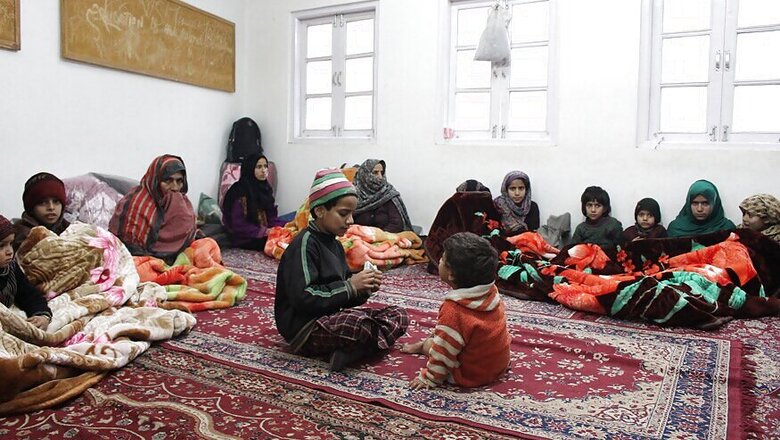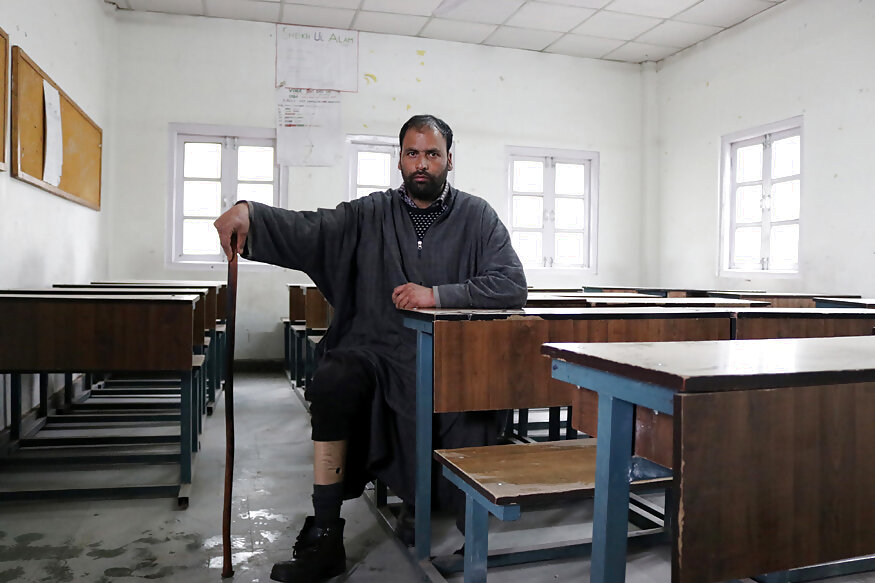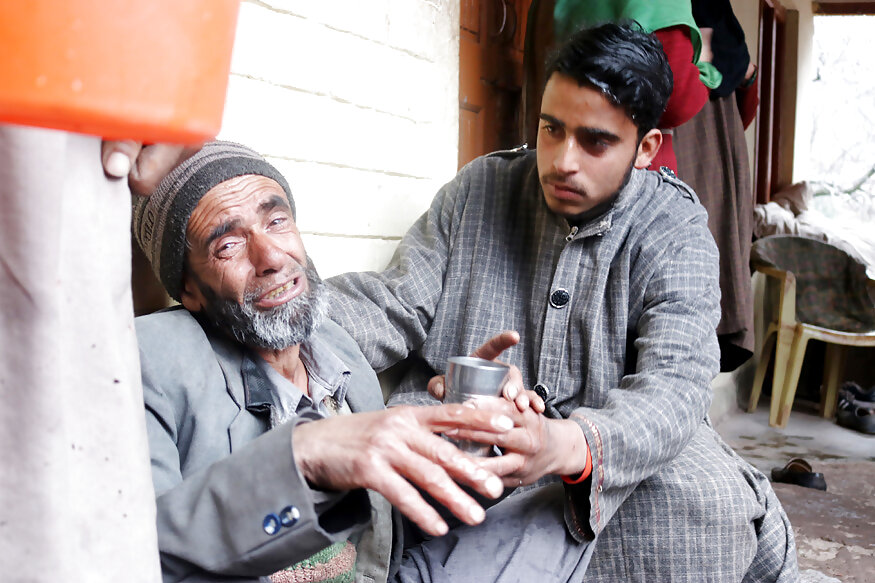
views
Srinagar: Fifteen-year-old Shazia Banu sits in a corner of a classroom with her family. She is visibly agonised and the most agitated among the scores of people, who like her have fled their homes amid heavy shelling.
In fact, there are hundreds of people from villages in Uri, located near the Line of Control (LoC) around 100 km north-west of Srinagar, who have taken shelter at Government Girls’ Higher Secondary School to escape unrelenting cross-border shelling.
Shazia lives in Silikote, which is one of the last habitations before LoC. Locally, areas this close to the no-man’s land are referred to as ‘Zero Line’ villages. In fact, so close is Silikote to Pakistan that the area and the village on other side of the border - Khawjabanday - used to be a single village once, separated only by a stream called Haji Peer.
Amid heightened tensions between the two countries, and regular exchange of heavy fire, Silikote and areas around it have suffered the most.
Incidentally, Shazia is as old as the ceasefire agreement that India and Pakistan signed after decades of cross-border hostility. But after months of regular cross-border shelling, the ceasefire agreement lies in tatters today. For the last twenty days, Shazia has rarely spent a day in peace.
On February 22, Shazia woke-up early in the morning and begun reading her science book. She was preparing for her class X examination that is a week away.
“It was around 7 am and I had opened my physics book,” she recalls. “There was sound of gunshots and a bullet pierced the wall of my room.”
Shazia and her family sat on the floor till evening, without eating, drinking or moving. “It was scary. I have never witnessed such a situation,” says Shazia. “There were bangs all the time.”
Locals of Silikote can pass walk around only during the day, after handing over their identity cards. Shazia went through the drill everyday to walk over a kilometre to her school.
Last week, mortar shells rained on Silikote like they hadn’t in the last 15 years. Mortar shells landed in the fields around their house. “I thought it will be last day of my life,” said Shazia. In the evening, as shelling abated for a few minutes, she along with her family and other villagers ran for their lives.
According to officials, around 1,300 people were evacuated in ambulances and private vehicles from Silikot, Charunda, Tilawari, Thajal, Batgram and other villages around Uri. At least five residential houses have been hit by mortar shells, they said.
But the fear for her life is not the only concern for Shazia, who is a student of Government High School in Balakoot. She is agonised because her exams are due in a week.
“I was working hard for my exams but it is like a war has just started. I have left my books at home and I don’t know if I will be able to find them again,” she says while tears roll down her cheeks.
“I want to become a teacher. I think educating people is the only way out for peace,” Shazia says while being surrounded by other children and women inmates of the camp.
Shazia is just one of the many sufferers who are living in a makeshift camp, unsure of when they’ll return to their houses. Each inmate of the camp has their own sorrow to share.

Two years after this, in August 2003, his mother Saja Begum, was hit by bullets in abdomen while working in the fields, and she died on the spot.
“God saved me today as well. But I don’t want to go back to my village now,” says Irshad, who is from Charunda village and survives on his father’s government pension.
Irshad says dozens of people from his village have already died due in cross-border firing. “You will find almost in every household someone like me—with an artificial leg or arm,” says Irshad.

A long queue of people waits to meet a doctor and paramedic examining the camp inmates.
“Five classrooms are occupied” says principal of the school, Muffad Ahmad. “We have only three rooms free. The school was scheduled to open on February 26 for class 12th exams, after nearly three months of winter break. But the exam centre has been shifted to other school. This is the life in border areas and we have to manage,” says Ahmad, who himself migrated from Kamalkoat area during the ’99 Kargil war.
“Our children are very efficient and want to excel in education but the constant shelling affects life and education adversely,” Ahmad says.
Uri is surrounded by Pakistani pickets from three sides and is one of the major infiltration routes for militants into Kashmir. In September 2016, four heavily armed militants attacked brigade headquarters in Uri. The attack, in which 19 soldiers were killed, was termed as ‘deadliest’ attack on the Army in two decades.
Terming the situation as “tense”, Uri Sub-Divisional Magistrate Sagar D said that proper arrangements have been put in place for the displaced people. “More than 1,600 people have been evacuated and 600 are putting up in the camp set by administration, rest are living around town with their relatives.”
People like Irshad don’t want to go back and demand that they should be settled somewhere else in safer places.
“The way we saw shelling this time, I don’t think it is in anyway a place to live,” says Irshad. “How long will we be like this, are not we humans?”
As he demands that they should be provided land in some safer place, the classroom packed by his villagers, affirms in unison.
The administration has given blankets and temporary heating arrangements have been made. Few people are busy preparing dinner in the community kitchen set-up by the administration.
Local politicians and officers from the district are thronging the camp and taking stock of the arrangements.
But for Shazia, it is desolation. She is silent and longs to see her books again. “Will there be peace?” she asks.




















Comments
0 comment